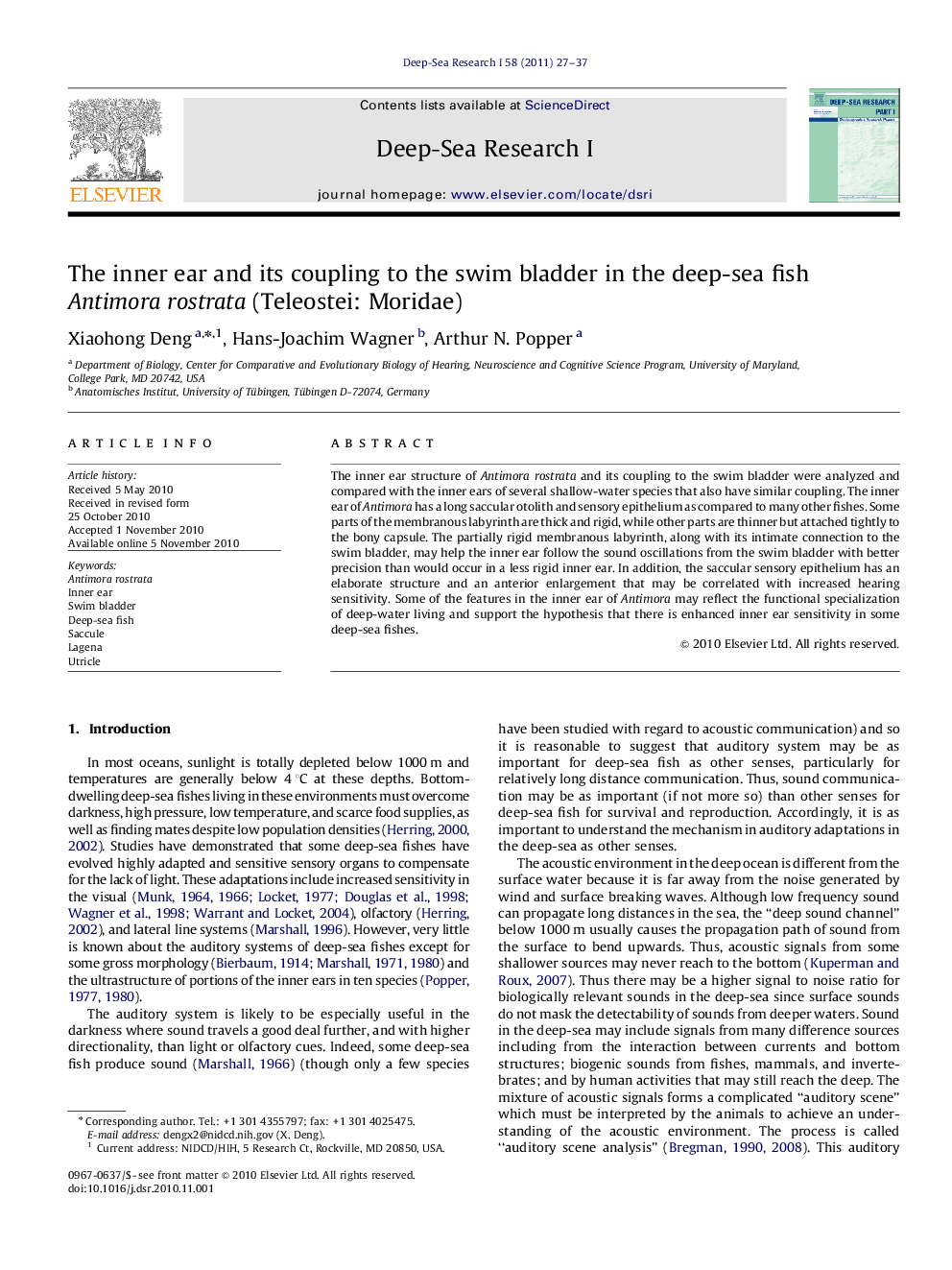| Article ID | Journal | Published Year | Pages | File Type |
|---|---|---|---|---|
| 4534938 | Deep Sea Research Part I: Oceanographic Research Papers | 2011 | 11 Pages |
The inner ear structure of Antimora rostrata and its coupling to the swim bladder were analyzed and compared with the inner ears of several shallow-water species that also have similar coupling. The inner ear of Antimora has a long saccular otolith and sensory epithelium as compared to many other fishes. Some parts of the membranous labyrinth are thick and rigid, while other parts are thinner but attached tightly to the bony capsule. The partially rigid membranous labyrinth, along with its intimate connection to the swim bladder, may help the inner ear follow the sound oscillations from the swim bladder with better precision than would occur in a less rigid inner ear. In addition, the saccular sensory epithelium has an elaborate structure and an anterior enlargement that may be correlated with increased hearing sensitivity. Some of the features in the inner ear of Antimora may reflect the functional specialization of deep-water living and support the hypothesis that there is enhanced inner ear sensitivity in some deep-sea fishes.
Research highlights► Deep-sea fishes may have evolved specialized inner ear structures that appear to enhance hearing sensitivity ► Antimora rostrata has larger inner ear with longer saccule and sagitta as compared with shallow water fishes ► Thick and rigid inner ear tissue in Antimora rostrata may be an adaptation for deep-water living ► Elaborate structure in the saccular maculae are associated with intimate connection between inner ear and swim bladder.
